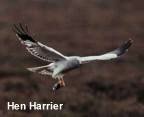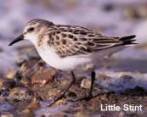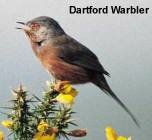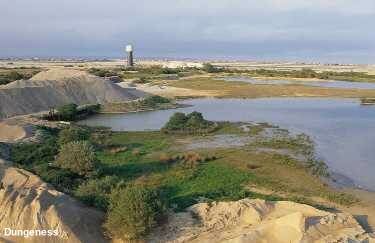Friday 18th FebruaryThe long weekend started Friday morning at 10.30am on the R.S.P.B. reserve of Elmley on the isle of Sheppey. Observed near the wardens cottage were Robin, Greenfinch, House Sparrows and Starlings. Walking down the track to reserve itself we spotted three Kestrels, Green Woodpecker, Mistle Thrushes, a group of Grey Partridge, Turnstone, huge amounts of Widgeon (3,500), two Little Grebes and 200 plus Golden Plover. On the reserve, perhaps as it was extremely windy, we saw very few small Birds, only Skylark and Meadow Pipits were seen. At low tide the Swale Estuary hosted a huge flock of Avocet with Grey Plover, Dunlin, Shelduck, Curlew, Godwits, Redshank and Oystercatchers. At high tide there were Great Crested Grebe, Goldeneye and several Red-Breasted Mergansers. From the hides on Elmley we saw Gadwall, Pintail, Shoveler, Teal, Ringed Plover, one Little Stint, Moorhen, Coot, Cormorants, Grey Herons, Magpies, Carrion Crow, Ring-tailed (female) Hen Harrier, one Short-Eared Owl, one Merlin and two Kestrels. All of our regular Gulls were seen. The only geese seen were the usual Greylag and Canada Geese. Back at the car park later in the afternoon the Little Owl could be seen in its usual tree.
Saturday 19th FebruaryOur group visited the Dungeness area starting our sea watching from the shingle bank near the power station. Gannets and Guillemots were seen regularly. Kittiwake, Black headed, Common, Herring, Lesser and Great Black Back Gulls were also seen. We Eventually located the Iceland Gull that had proved very elusive. We then took a short trip up the coast road to Lydd gravel pit. There we found Goosander, Long-Tail Duck, Goldeneye, Ruddy Duck as well as the regular Teal, Tufted Duck, Pochard, Gadwall, Shoveler and Mallard. On the walk back we were lucky enough to see a beautiful Dartford Warbler and a Stonechat. After a short time we moved to the R.S.P.B. reserve on Dungeness. The highlights we found here were; Sparrowhawk, Kestrel, a marvellous Red-Throated Diver, one Slavonian Grebe, several Little Grebes and nine Smew - six red headed females and three beautiful males. Of the smaller birds, we had sightings of Several Reed Buntings and one Corn Bunting.
Sunday 20th Februarythe last day of our weekend we spent at Stodmarsh English Nature Reserve (See their website at: http://www.naturegrid.org.uk/ng-html/stod/st-intro.html). First we visited the Grove end of the reserve entering by the Grove Ferry Pub to explore the new reed bed area. There we saw a Blue Winged Teal and one Bittern flying into the reeds. Cetti's Warbler and Bearded Tits were heard but not seen to the frustration of many. After lunch we visited the visitors centre end of the reserve from Stodmarsh village. Near the woodland area we observed Siskin, Goldcrest, Treecreeper, Yellowhammer, Blue, Great and Long-Tailed Tits.
This was an exciting and very enjoyable weekend. Many thanks, to Anita for arranging it all for our group. Reserves VisitedElmley RSPB Reserve Grid Ref : TQ926905. Mostly reclaimed marshland, on the south side of the Isle of Sheppey, bordering the muddy shore of the Swale estuary. The Swale is is an important wildfowl refuge - as many as 30,000 birds gather there at once, chiefly Mallard, Teal and Wigeon. About 20,000 waders winter on the estuary: Knot, Dunlin, Curlews, Golden and Grey Plover and Oystercatchers are among the most numerous. Other wintering birds include Brent Geese and White Fronted Geese, Bar Tailed Godwit, Short Eared and Little Owls and Hen and Marsh Harriers.Dungeness RSPB Reserve The reserve is signposted off the Lydd to Dungeness road 10 miles/16km east of Rye and 1 mile south of Lydd. Dungeness is the RSPB's oldest nature reserve. It was created in 1931 to protect shingle nesting seabirds, Dungeness being the largest shingle formation in Europe, formed over several thousand years. It is home to one of the most important seabird colonies in the south of England.
The reserve covers nearly 1000 hectares and includes the best examples of undisturbed shingle ridges in the UK. it is a good place to see migrating birds. During the spring and autumn where almost anything can appear. Stodmarsh English Nature Reserve Grid Ref : TR220610. The car park for the Stodmarsh Reserve is reached down a track from Stodmarsh village by Red Lion pub. Public access on Lampen Walland river wall. There are three hides (one with disabled access). Lagoons, reed beds, marsh, partially flooded meadows, damp alder/willow woodland. Regular species include: Shelduck, Teal, Garganey, Water Rail, Snipe, Bearded Tit, Grasshopper Warbler. The reserve is also known for its wintering Bittern, wildfowl, waders, Hen Harrier and Great Grey Shrike. Author: Philip Anderson. All images on this page appear courtesy of RSPB image library: http://www.rspb-images.com |
Page last updated:
Web Design Graham Mee. ? Copyright of all pages South East Essex RSPB Local Group. All images copyright of owners
The Royal Society for the Protection of Birds. Registered charity no 207076


 ????????????
???????????? 


